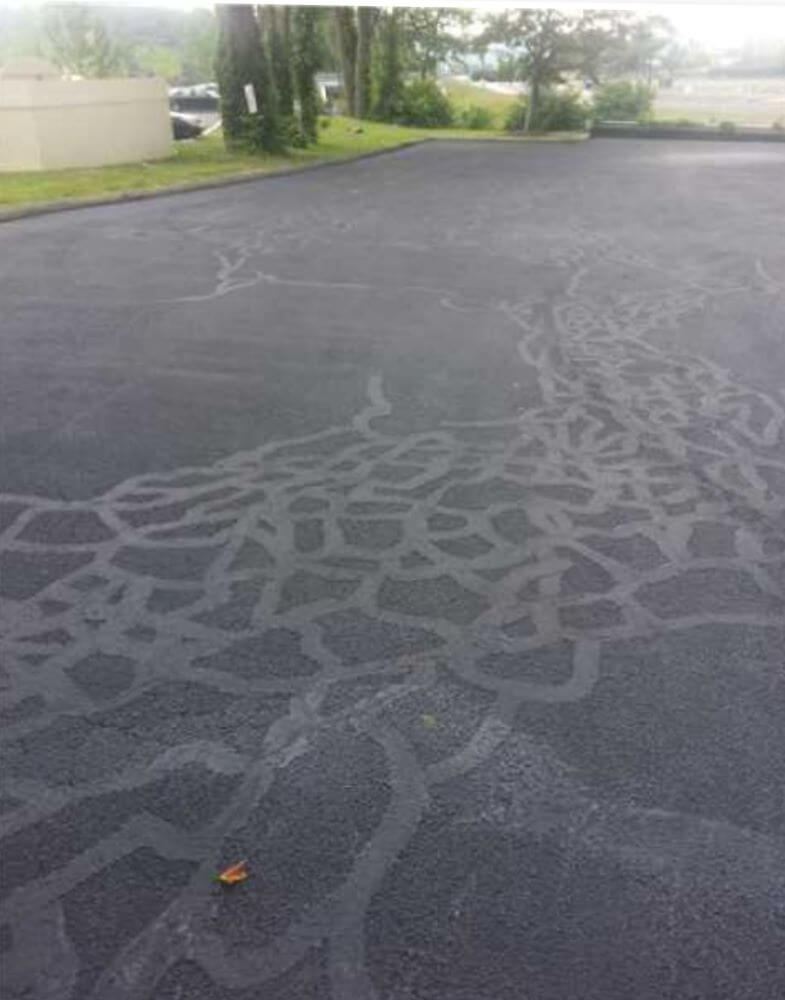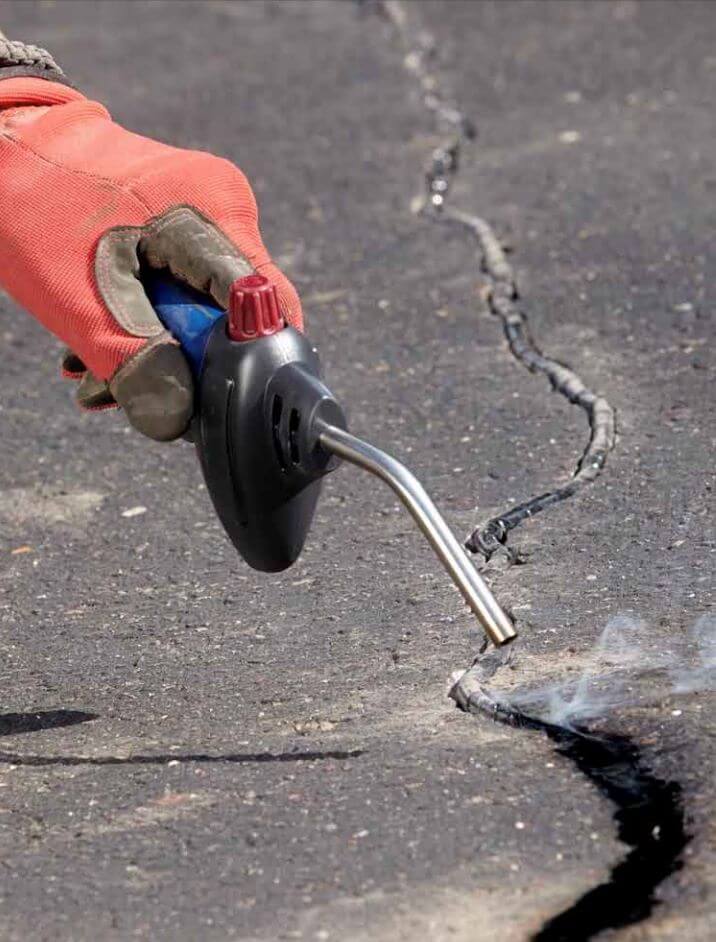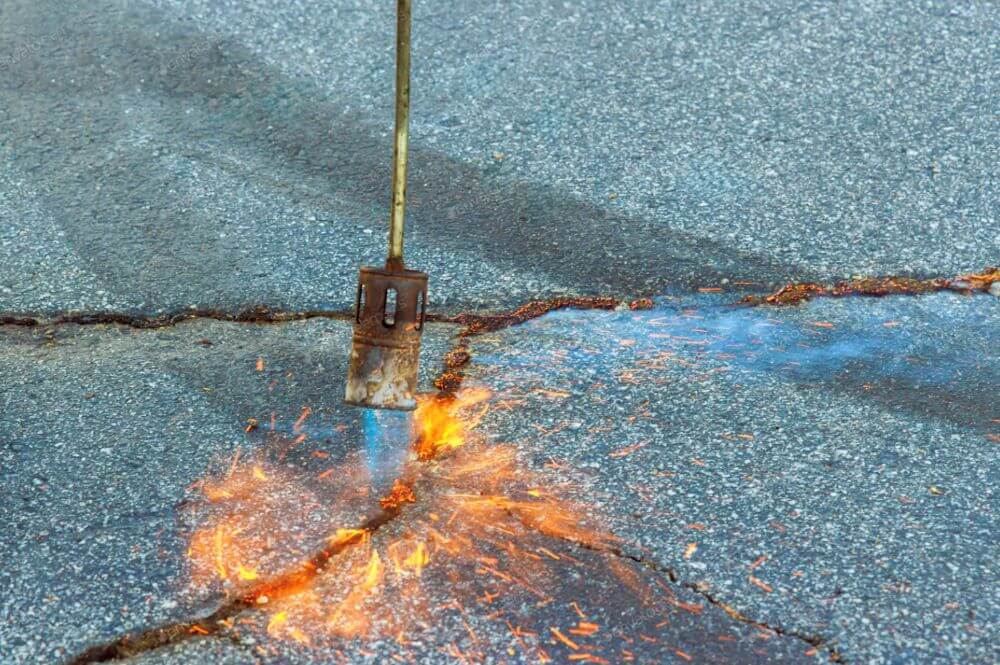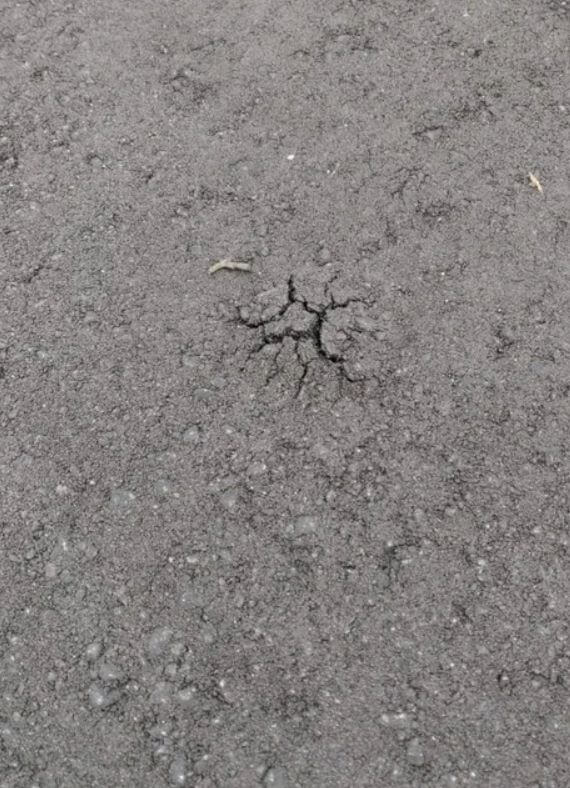Maintaining asphalt surfaces is essential for prolonging their usability and ensuring safety. While asphalt is known for its durability and resilience, it is prone to various types of damage, particularly cracking. Crack sealing is a preventive maintenance measure that can save money in the long run by avoiding extensive repairs caused by unaddressed cracks. This article explores the importance of crack sealing, identifies different types of asphalt cracks, their causes, and discusses the significant benefits of regular crack maintenance.
Overview of Asphalt Maintenance
Asphalt maintenance encompasses a variety of practices aimed at extending the lifespan of pavement by keeping it in good condition. These practices include routine assessments, crack sealing, patching, seal coating, and occasionally, complete resurfacing. Proper maintenance helps to prevent the premature deterioration of asphalt surfaces, ensuring that they remain functional and aesthetically pleasing. Among these practices, crack sealing plays a pivotal role in maintaining the structural integrity of the pavement.
Importance of Crack Sealing in Pavement Longevity
Crack sealing is a critical activity in the preservation of asphalt surfaces. It effectively prevents water from seeping into the sub-base through cracks and eroding the material. Water infiltration can cause severe problems, such as potholes, subsurface erosion, and ultimately, a failure of the pavement structure. By sealing cracks as they develop, the integrity of the asphalt is preserved, significantly extending the pavement’s service life and reducing the frequency and cost of repairs.
Understanding Asphalt Cracks

Types of Asphalt Cracks
- Transverse cracks: These cracks run perpendicular to the traffic direction and are usually caused by temperature fluctuations that make the asphalt contract and expand.
- Longitudinal cracks: These run parallel to the direction of traffic and can be caused by poor joint construction, asphalt shrinkage, or a failing subbase beneath the asphalt.
- Edge cracks: These appear along the edges of the road and are typically caused by insufficient edge support, poor drainage, or vegetation growth along the edge.
- Alligator cracks: Also known as fatigue cracking, these are interconnected cracks that form a pattern similar to an alligator’s skin. They are usually indicative of structural failure in the asphalt due to repeated traffic loadings.
Causes of Cracking
- Thermal contraction: The asphalt pavement contracts in colder weather, and if the contraction is too severe, it can lead to cracking.
- Overloading: Heavy loads can stress the pavement more than it was designed to handle, leading to cracking.
- Weathering and oxidation: Exposure to oxygen and ultraviolet rays from the sun hardens and dries out the asphalt binder, making the pavement more brittle and susceptible to cracking.
- Poor initial paving: Inadequate compaction during the paving process, low-quality materials, or improper temperature levels during laying can all lead to early pavement failure and cracking.
Benefits of Crack Sealing

Prevents Water Infiltration and Damage
Sealing cracks in asphalt surfaces is the most effective way to prevent water from penetrating into the pavement, which is crucial to prevent subgrade softening and erosion. This simple maintenance step can prevent more significant issues such as potholes, frost heaves, and larger cracks, which can be costly to repair.
Extends the Lifespan of Asphalt
Regularly sealing cracks helps maintain the overall structural integrity of the pavement. It significantly extends the life of the road by preventing the types of damage that can lead to a full pavement failure. Maintenance costs are consequently reduced, and the pavement can last many years beyond its expected lifespan without requiring major repairs or replacement.
Reduces the Need for Extensive Repairs
By preventing the initial damage from worsening, crack sealing reduces the need for more extensive, expensive repairs such as patching, overlay, or complete pavement replacement. It allows for more control over maintenance budgets and planning, avoiding the need for emergency repairs that can disrupt traffic and business operations.
Improves Safety and Aesthetics of Pavement Surfaces
Besides the structural benefits, crack sealing also enhances the safety and appearance of pavement surfaces. Smooth, crack-free surfaces are safer for vehicles and pedestrians, reducing the risk of accidents related to poor pavement conditions. Moreover, well-maintained roads reflect positively on the surrounding area, improving curb appeal and possibly increasing property values.
Materials Used for Crack Sealing
Hot-Applied Sealants
Hot-applied sealants are one of the most common choices for crack sealing in regions with colder climates. These sealants are heated to a liquid state and poured into the crack, where they cool and harden, forming a strong, flexible seal. The main advantages of hot-applied sealants include their durability and effectiveness in sealing wider cracks. They are ideal for areas that experience significant temperature fluctuations that can cause the asphalt to expand and contract.
Cold-Applied Sealants
Cold-applied sealants are used primarily for smaller cracks and in areas with milder climates. These sealants are applied at room temperature and are easier to handle because they do not require special equipment for heating. While they are generally not as durable as hot-applied sealants, they provide a quick, cost-effective solution for minor cracks that do not undergo extreme weather changes.
Considerations for Choosing the Right Material
Selecting the appropriate sealant is critical to effective crack sealing. The choice of material should be based on several factors:
- Climate Conditions: In colder climates, hot-applied sealants are preferred due to their ability to bond strongly with the pavement even in low temperatures. In warmer climates, cold-applied sealants might suffice.
- Crack Type and Size: Hot-applied sealants are better suited for wider and deeper cracks due to their superior bonding capabilities. Cold-applied sealants are adequate for smaller, non-structural cracks.
- Traffic Levels: High-traffic areas require a more robust sealant that can withstand the wear and tear of heavy use, typically making hot-applied sealants the better option.
Crack Sealing Procedures

Cleaning the Crack
Before applying sealant, it is crucial to thoroughly clean the cracks to ensure the sealant adheres properly. This step cannot be overstated, as failure to properly prepare the crack can result in the failure of the sealant.
- Importance of Removing Debris: Dirt, debris, vegetation, and water in the crack can prevent the sealant from adhering correctly, reducing the effectiveness of the seal. Proper cleaning ensures that the sealant bonds directly with the asphalt, creating a durable seal that will extend the life of the pavement.
- Techniques for Effective Cleaning: Effective cleaning techniques include using high-pressure air, wire brushes, or mechanical routers. These methods help remove loose material and prepare the sides of the crack for better adhesion of the sealant.
Application Methods
The application of crack sealant varies depending on the type of sealant used and the specific conditions of the pavement.
- Use of Direct-Fire Kettles: For hot-applied sealants, direct fire kettles are used to heat the sealant to the required temperature. The liquid sealant is then poured into the crack using a pour pot or wand applicator. This method ensures that the sealant is applied hot, allowing it to flow into the crack and form a strong bond.
- Use of Cold Pour Applicators: Cold-applied sealants can be applied using a simple caulking gun or a specialized pour pot. This method is less labor-intensive and does not require the use of heating equipment, making it suitable for smaller jobs or areas where the use of hot-applied sealants is not feasible.
Proper Timing and Environmental Conditions for Sealing
Timing and weather conditions play a crucial role in the effectiveness of crack sealing.
- Proper Timing: The best time for crack sealing is generally during the spring or fall when temperatures are moderate. Extreme heat or cold can affect the curing process of the sealant and its adherence to the asphalt.
- Environmental Conditions: Dry weather is crucial for the application of both hot and cold-applied sealants. Moisture in the air or on the pavement surface can prevent the sealant from adhering correctly, compromising the quality of the seal.
Best Practices for Crack Sealing

Proper execution of crack sealing can significantly impact the effectiveness and durability of pavement maintenance. Here are some best practices that should be followed:
Selecting the Right Time of Year for Sealing
The timing of crack sealing operations is crucial for their success. Typically, late spring and early fall are ideal because moderate temperatures help the sealant cure properly. Extreme temperatures, either too hot or too cold, can adversely affect the application and performance of the sealant.
Ensuring the Asphalt is Dry and Clean
Before applying sealant, it is essential to ensure that the asphalt surface is completely dry and free of debris. Cleaning the cracks effectively removes dust, dirt, vegetation, and moisture that can hinder the adhesion of the sealant to the asphalt, potentially leading to premature failure of the repair.
Applying Sealant at the Recommended Temperature
Each type of sealant has specific temperature ranges for application, which are critical to follow. Applying sealant at the recommended temperature ensures optimal viscosity and bonding properties, allowing for proper penetration and adhesion to the crack walls.
Traffic Management During and After Application
Managing traffic flow during and immediately after the application is crucial to allow the sealant enough time to cure. Premature exposure to traffic can deform the sealant, reducing its effectiveness and lifespan. Proper signage and barriers should be used to manage traffic flow until the sealant has cured completely.
Common Mistakes in Crack Sealing

Avoiding common pitfalls can greatly enhance the effectiveness of a crack-sealing program. Here are some frequent errors to watch out for:
Ignoring Small Cracks
One of the most common mistakes is neglecting small cracks, which can evolve into larger problems if water seeps in and causes further damage. Even minor cracks should be addressed promptly to prevent them from expanding and causing more severe issues.
Inadequate Cleaning of Cracks Before Sealing
Failure to thoroughly clean cracks before the application of a sealant is a significant error that can compromise the integrity of the repair. Without proper cleaning, the sealant may not adhere well, leading to a need for more frequent and costly repairs.
Using Inappropriate Materials for Specific Conditions
The selection of sealing materials should be based on specific conditions, including climate, traffic levels, and the nature of the cracks. Using the wrong materials can reduce the efficacy of the repair and may lead to further deterioration rather than prolonging the pavement’s lifespan.
Crack sealing is a cost-effective maintenance method that can significantly extend the life of asphalt pavements and prevent future damage. By understanding the types of cracks, using the correct materials, and adhering to best practices, property managers and municipal authorities can ensure safer and more aesthetically pleasing asphalt surfaces. Regular maintenance and timely interventions are crucial in preserving the integrity and functionality of these important infrastructure elements.




